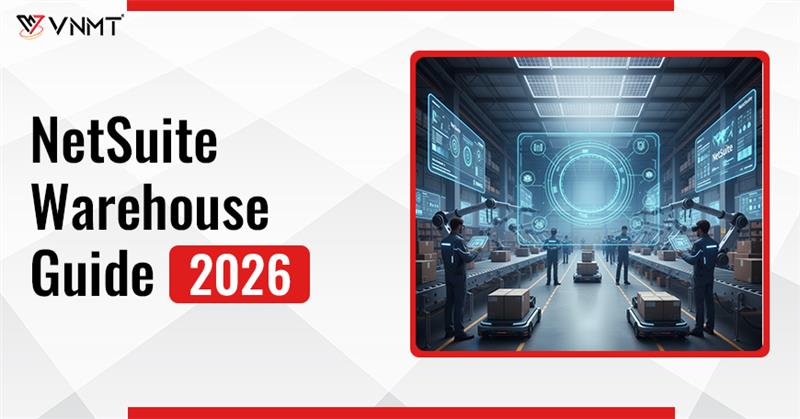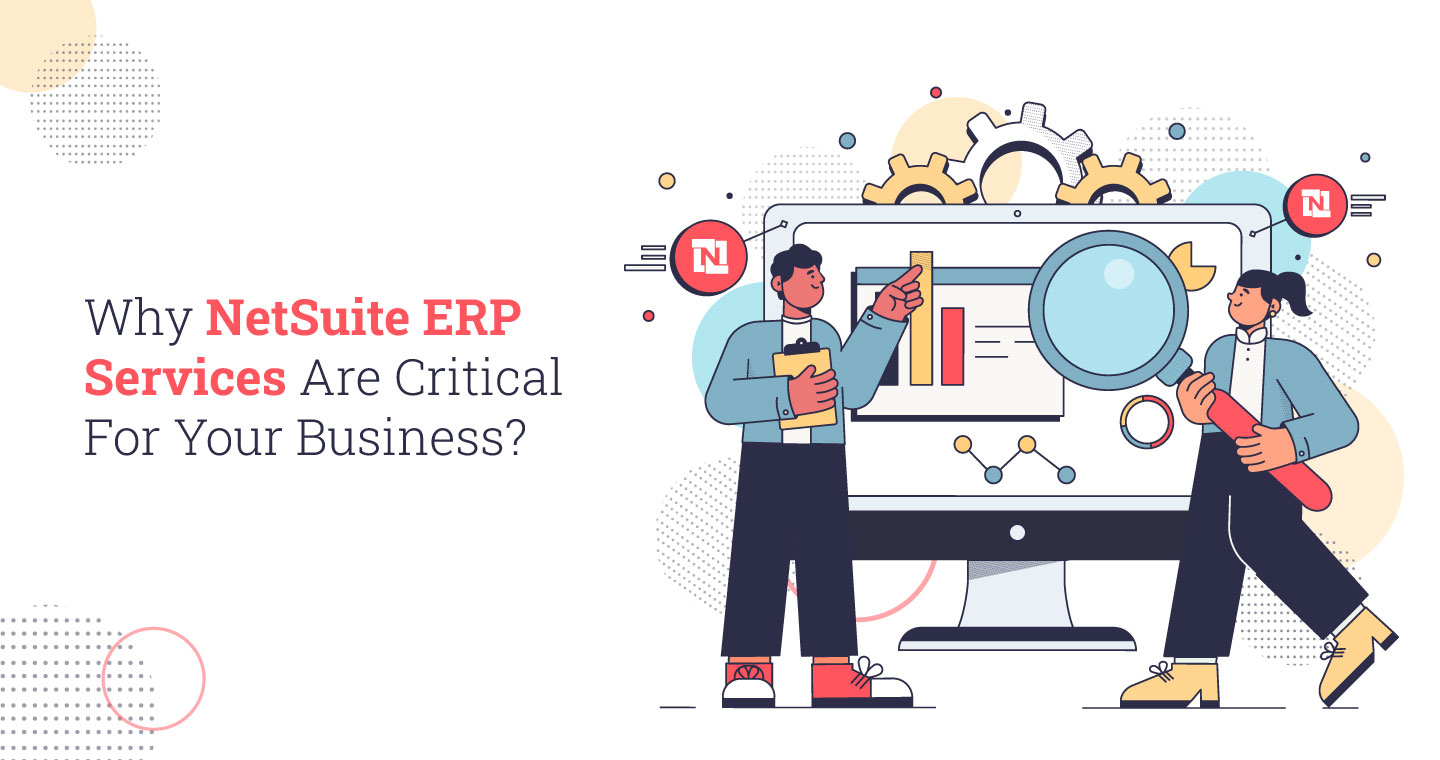Warehousing is the backbone of the supply chain. It has been understood that warehouses are merely storage areas full of inventory. They are now intelligent, flexible hubs that must deal with the increasing demands of e-commerce, complex global supply chains, and increasingly high customer expectations. If you are spending on the warehousing, you will have to settle for expensive inefficiencies, late shipping, and upset customers.
NetSuite warehouse management (NetSuite WMS) is a requirement of the growing market. Automating warehouse tasks, providing real-time visibility, and coordinating with the ERP system help businesses run operations with greater accuracy, speed, and efficiency.
In this guide, we will learn how NetSuite WMS works, its greatest advantages, what it offers, and why it is a solution for 2026 budgeting organizations’ warehouse management.
What is NetSuite Warehouse Management?
NetSuite warehouse management is an integrated application on the NetSuite ERP platform that combines warehouse operations with financials, inventory, and supply chain functions. In contrast to stand-alone warehouse software, it is a single, integrated platform where all receiving and inventory tracking, including order picking, is tracked in real-time.
The system has a single source of truth for warehouse employees, managers, and executives. Robust integration avoids costly mistakes, provides greater visibility, and enables a rapid response to dynamic business conditions.
How Does NetSuite WMS Work
NetSuite WMS’s power lies in the fact that it handles all the warehouse life cycle processes, such as.
Inbound Logistics Made Easy
1. Simplifies receipt through barcoding, labeling, and real-time validation against the purchase order.
2. Avoids overstock or seasonality through synchronized integration with NetSuite inventory management .
Solves Storage and Putaway Problem
1. Directs employees to the most efficient storage locations by product category, demand, or bins available.
2. Saves space wastage and saves time wasted searching for products.
Smarter Picking and Packing
1. Multi-pick functionality, such as wave picking, batch picking, and zone picking, is supported.
2. Automatic shipping labels reduce shipping costs and enhance accuracy.
Accurate Shipping and Fulfilment
1. It automatically loads to print shipping labels and track shipments.
2. Provides fast, accurate, and customer-focused NetSuite fulfillment.
Regular Counting and Audits
1. Allows the conduct of regular cycle counts to verify inventory against records.
2. Eliminates or minimizes year-end physical inventory audits, saving time and expenses.
Key Features of NetSuite WMS
NetSuite’s warehouse management system is built with efficiency-boosted tools-
Mobile Warehouse Management: Work can be done with ease to offer real-time accuracy.
Inventory Visibility: Monitor inventory in multiple warehouses, bins, or locations through NetSuite inventory management integration.
Warehouse Automation: Staff automation, auto-replenishment, and barcode scanning eradicate inefficiencies.
Smart Picking: Employees are directed by intelligent algorithms to pick products on the best route.
Fulfillment Management: Carrier integration through built-in carriers provides automated shipping with optimized delivery speed.
Analytics and Reporting: Managers can see the warehouse KPIs, such as order accuracy, labor productivity, and throughput.
Advantages Of NetSuite Warehouse Management
Companies utilizing NetSuite WMS experience revolutionary business changes-
- Real-time scan eliminates human errors and provides consistent data.
- Smart picking and automation reduce order cycle times.
- Cost-effective labor management and elimination of errors lower operational costs.
- Scale up with new geographies, warehouses, or channels without defect.
- Timely and accurate delivery builds trust and establishes brand equity.
Managers are able to improve supply chains and provide better forecasts with accurate information.
Why Is NetSuite WMS Essential in 2026
Warehousing in 2026 looks far different from where it was a decade ago. Companies today must contend with:
- Increased e-commerce and omnichannel shipping.
- Increased same-day or next-day shipping demands.
- Increased labor shortages require more intelligent labor resource planning.
- Increased global supply chain complexity.
That is not something legacy warehouse operations can accomplish. Legacy warehouse operations are siloed, do not have real-time visibility, and cannot scale quickly. NetSuite warehouse management eliminates all those deficits with automation, end-to-end visibility, and open integration among supply chain functions.
Indeed, NetSuite supply chain optimization with WMS is the recipe for success for businesses to automate distribution, planning, and sourcing.
Practical Uses And Cases
We will have some scenarios to observe the effect of NetSuite WMS-
E-commerce Merchant:
An internet business can enable shipping, picking, and packing bulk orders and bypass holiday doldrums.
Global Distributor:
Businesses that have various regional warehouses can balance inventory in hand and facilitate cross-border shipment without sacrificing compliance.
Manufacturing Company:
Manufacturers can integrate raw material storage along with manufacturing planning in a way that the material is consumed when required.
All of these instances reflect the flexibility and scalability of the system to support different business models and industries.
Implementing NetSuite WMS Best Practices
Your NetSuite warehouse management system needs to be maximized by strategic rollout asas-.
Invest in Training- Train employees on mobile devices to ensure ease of adoption and reduce errors.
Automate Repetitive Tasks- Have the system automatically restock, assign tasks, and allocate orders.
Optimize Data Analysis– Monitor performance data such as order accuracy, pick rate, and carry cost.
Transportation Integration– Utilize WMS and transport integration for end-to-end visibility and process optimization.
Phase-Based Scaling– Start with core competencies and include advanced automation stages in the future.
Common Warehouse Challenges & How NetSuite WMS Fixes Them
Warehouses today are faced by a myriad of issues, each capable of causing delays, escalating costs, and diminishing customer satisfaction. NetSuite’s warehouse management system has been crafted to combat all these issues by virtue of automation, real-time visibility, and end-to-end integration with inventory and fulfillment operations. Its greatest challenges are-
1. Manual tracking causes inconsistencies in inventory, lost orders, and lost sales. NetSuite inventory visibility provides real-time visibility into all warehouses and bins with accurate, up-to-the-minute stock levels and no costly errors.
2. Inventory staff waste hours on non-productive activities, ineffective pick paths, or hunting for inventory. NetSuite warehouse automation automates processes, task rationalization, and provides mobile capabilities to boost productivity and get rid of wasted time.
3. Order fulfillment lag destroys customer satisfaction and brand reputation. NetSuite fulfillment automates picking, packing, and shipping processes to allow warehouses to ship on time, all the time.
4. Standard systems are likely to live in silos, which may be destructive to monitoring performance or decision-making based on facts. NetSuite WMS dashboards give real-time visibility to managers to look into inventory, order status, labor productivity, and shipping performance.
New market expansion and multi-location businesses can complicate business operations growth and render it impossible. NetSuite WMS supports multi-location operations to enable businesses to grow without sacrificing business control.
Read More: Common NetSuite WMS Integration Problems and How to Resolve Them
NetSuite WMS vs. Competitors
In contrast to most conventional WMS software, NetSuite WMS is an ERP-integrated solution. Accounting, customer, inventory, and supply chain data move in real time without interruption, without requiring multiple systems.
It’s cost-effective, collaboration-friendly, and provides time to value. Companies achieve efficiency and strategic visibility that stand-alone systems cannot deliver.

Remake Your Warehouse with NetSuite WMS
2026 warehouse is no longer a warehousing warehouse; it’s a streamlined facility that supports business excellence. NetSuite warehouse management supports businesses in breaking today’s logistics chains through automation, data intelligence, and integration. From NetSuite inventory management to NetSuite fulfillment to NetSuite supply chain optimization, it’s the whole enchilada for business excellence.
Your solution is NetSuite WMS if you need to automate your warehouse and advance 2026 opportunities to the next level. Get in touch with us on LinkedIn to learn how our specialists may assist you in implementing, installing, and deploying NetSuite warehouse management according to your business needs. Follow VNMT Solutions and subscribe to our YouTube channel for latest trends and update
















